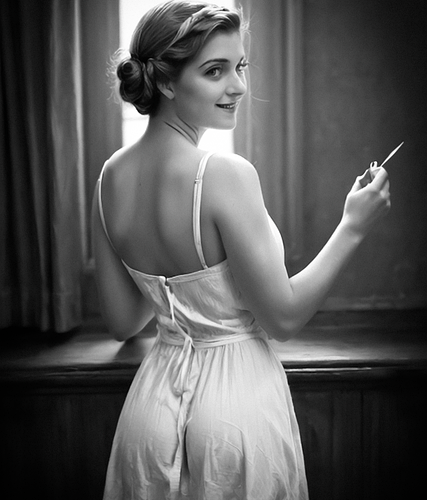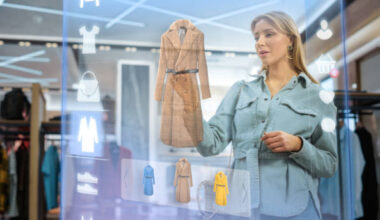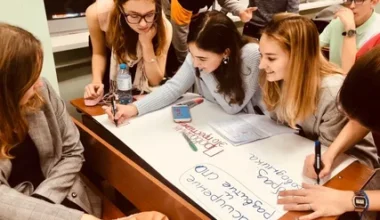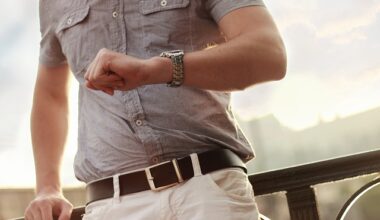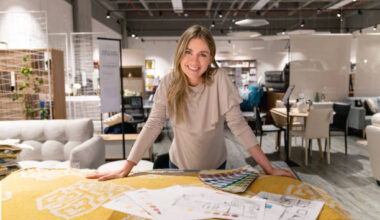The Jazz Age, sometimes referred to as the Roaring 20s Fashion, was a decade characterized by unheard-before levels of social upheaval, economic expansion, and cultural vibrancy. The fashion of this era was one of its most fascinating features. Following the end of World War I and the start of a new age, people’s fashion choices reflected their embrace of emancipation, glitz, and glamour. Explore the famous fashion trends that characterized the Roaring 20s fashion and their impact on modern style by traveling back in time.
The Rise of Flappers
The most famous picture linked to the 1920s is perhaps that of the flapper, a young, self-reliant lady who defied gender stereotypes with her behavior and sense of style. The boyish, loose shapes that allowed for unrestricted movement were preferred by flappers over the constricting corsets and clothing of earlier generations. With its erect, formless silhouette, the shift dress came to represent the modern woman. These bold women adopted a more carefree and androgynous style by dressing in knee-length skirts, sleeveless tops, and drop waist dresses.
Embellishments and Accessories
Even while 1920s silhouettes were generally straightforward, the decade was distinguished by ostentatious accessories and flourishes. Flapper costumes were embellished with metallic embroidery, sequins, and beaded fringe to create an air of grandeur and elegance. Women added a dash of glitz to their ensembles by accessorizing with long pearl necklaces, feathery headbands, and cloche hats. Fashion was also impacted by the popularity of Art Deco design, which was characterized by strong motifs and geometric patterns that adorned everything from jewelry to apparel.
Menswear Inspired Fashion
Men’s fashion also saw tremendous changes throughout the Roaring 20s fashion, and women’s apparel was not the only thing that changed in style. Conventional suits were replaced by more carefree and informal clothes, which reflected the era’s carefree mindset. Wide-legged pants gained popularity among men, who wore them with vests and suspenders to create a comfortable yet fashionable appearance. With its oversized shoulders and wide lapels, the double-breasted suit gained popularity. Newsboy caps and fedoras finished the ensemble, lending a touch of refinement to menswear.
Eveningwear Elegance
Evening dress of the 1920s reflected the glitz and excess of the era, which was marked by grandiose parties and soirées. Ladies wore slinky, bias-cut dresses with provocative backless patterns and plunging necklines, often crafted from opulent materials like satin and silk. The eveningwear staple of the time was the little black dress, made famous by Coco Chanel and representing the elegant and refined style of the day. Men, on the other hand, embraced formal attire with zeal, choosing tuxedos with tails—complete with a white shirt, bow tie, and polished dress shoes—for black-tie affairs.
Legacy and Influence
The Roaring 20s fashion still have an impact on contemporary style, encouraging designers and fashion enthusiasts to emulate the Jazz Age aesthetic. From the prevalence of fringe and decorations to the return of drop-waist silhouettes, elements of 1920s design can be observed on modern runways. The androgynous style that was popularized by flappers has also returned, with designers continuing to break the boundaries of conventional gender roles in their creations. Looking back at the classic Roaring Twenties fashion, we are taken back to a time when freedom, inventiveness, and unfettered optimism were the norm—a legacy that still fascinates and inspires us to this day.
How do you dress for the Roaring 20s?
Embracing the enduring fashion trends of the time while incorporating your own contemporary spin is the essence of dressing for the Roaring Twenties. Here are some pointers for styling in the style of the Roaring Twenties:
- Flapper Dresses: Start with a shift dress with a straight silhouette or a dress with a drop waist. Seek for gowns composed of airy materials such as satin, silk, or chiffon. For extra glitz, choose dresses with metallic embroidery, sequins, or beaded fringe.
- Knee-Length Skirts: If you’re more of a separates kind of person, team a loose-fitting shirt or sleeveless top with a knee-length skirt. Select skirts with layers or pleats to add movement.
- Androgynous Tailoring: Men should embrace the androgynous style of the time by dressing in a vest and wide-legged pants. For a genuine look, wear suspenders and go with a wide-lapel double-breasted suit jacket.
- Accessories: The finishing touches to your Roaring 20s fashion ensemble are the accessories. Think of beaded evening purses, feathered headbands, cloche hats, and long pearl necklaces for women. Men can accessorize with pocket squares, cufflinks, newsboy hats, and fedoras.
- Shoes: Select shoes that will look well with your ensemble and be comfortable enough to dance the night away in. Strappy sandals with short heels or Mary Jane heels with a T-strap are perfect for ladies. For a more traditional look, men can choose brogues or two-tone Oxfords.
- Makeup and Hair: Take inspiration from the glitzy 1920s hair and beauty trends by sporting a striking red lip, smokey eyes, and well-defined eyebrows on ladies. For a genuine hairdo, think about finger waves or a bob haircut. Men can seem dapper by wearing their hair parted on the side or slicked back.
- Eveningwear Elegance: Invest in a classic tuxedo with tails for men or a slinky bias-cut gown for women if you’re attending a fancy event. Accessorize your evening dress look with refined shoes and exquisite accessories.
What was the dress code for the Roaring 20s Fashion?
Depending on the event, social standing, and individual fashion tastes, there were several dress codes during the Roaring 20s fashion. Nonetheless, the following societal conventions and fashion trends defined the time period:
Everyday Wear
Compared to earlier decades, both men and women generally wore more informal clothing during the day. For women, this typically meant straight-cut, loose-fitting dresses or skirts that reached the knees, combined with basic tops or blouses. Men preferred well-fitting suits with wide-leg pants, frequently accessorized with suspenders and vests for a casual yet put-together appearance.
Flapper Fashion
The famous flapper look came about as a protest against historical norms. Flappers were renowned for their audacious wardrobe selections, which included sleeveless shirts, short skirts that enhanced mobility, and drop waist dresses. Fringe, sequins, or metallic embroidery were common embellishments for these dresses, lending a glamorous touch to the flapper look.
Accessories
The Roaring 20s fashion aesthetic was completed in large part by accessories. Long pearl necklaces, headbands with feathers, cloche hats, and beaded evening purses were worn by women as decorations. Men added a touch of refinement to their ensembles by accessorizing with pocket squares, cufflinks, fedoras, and newsboy caps.
Eveningwear
Dressing more formally was required for evening events. Slinky bias-cut dresses with provocative backless patterns and plunging necklines, frequently crafted from silk and satin, were the preferred choice for women. Thanks to Coco Chanel, the little black dress became a mainstay of evening clothing. For black-tie affairs, men dressed in tuxedos with tails, paired with a crisp white shirt, a bow tie, and polished dress shoes.
Makeup and Hairstyles
Boldness and glamour defined the Roaring 20s fashion hairstyles and cosmetics. Women loved a bob hairstyle or finger waves, along with a bold red lip, smokey eyes, and defined eyebrows. For a professional appearance, men usually wore their hair parted to the side or slicked back.
What were the trends in the Roaring 20s?
Significant cultural, social, and economic upheavals occurred during the Roaring 20s fashion, and these developments were mirrored in the fashion styles of the time. The following are a some of the major styles that characterized the time:
- Flapper Fashion
The famous flapper look came to represent women’s liberty and defiance of social restrictions. With their knee-length skirts, drop-waist dresses, and sleeveless tops that allowed for more mobility, flappers celebrated boyish silhouettes. These gowns radiated glitz and extravagance as they were frequently embellished with fringe, sequins, and metallic embroidery.
- Androgynous Tailoring
In terms of fashion, both sexes adopted a more carefree and androgynous look. Wide-legged pants were popular among men, who wore them with vests and suspenders to create a comfortable yet fashionable appearance. Gender stereotypes became less clear when women began wearing menswear-inspired pieces like fitted blazers and suits.
- Art Deco Influence
The Roaring 20s fashion had a great impact on fashion from the Art Deco movement. The clothing, accessories, and jewelry of the time were embellished with geometric patterns, striking motifs, and elaborate embellishments that gave the aesthetic a modern and sophisticated touch.
- Eveningwear Elegance
Evening dress of the 1920s mirrored the glitz and excess of the era, which was recognized for its grandiose parties and soirées. Ladies wore sensual bias-cut dresses with provocative backless patterns and plunging necklines, often crafted from opulent materials like satin and silk. The eveningwear staple of the time was the little black dress, made famous by Coco Chanel and representing the elegant and refined style of the day. Men loved dressing up, choosing to wear tuxedos with tails, a white shirt, a bow tie, and polished dress shoes for black-tie affairs.
- Accessories
The Roaring 20s fashion aesthetic was completed in large part by accessories. A dash of glitz was added to women’s outfits by accessorizing with long pearl necklaces, feathered headbands, cloche hats, and beaded evening bags. Men added chic accents to their overall appearance by accessorizing with pocket squares, cufflinks, newsboy caps, and fedoras.
What colors are Roaring 20s?
A number of variables, such as societal shifts, technical developments, and creative movements, had an impact on the color scheme of the Roaring 20s fashion. The following are some of the main hues that were popular at the time:
Capturing the rich, colorful style of the Roaring 20s fashion. Styled motifs, geometric patterns, and cultural influences from different sources came together to create an aesthetically appealing and unique style for the time.
- Stylized Motifs and Geometric Patterns: The 1920s saw the rise of Art Deco, a prominent artistic movement that embraced geometric patterns and stylized motifs drawn from nature, machinery, and ancient cultures. These themes gave fashion, architecture, and decorative arts a feeling of dynamism and modernity. They frequently featured sharp lines, symmetrical forms, and repeating patterns.
- Renaissance of Chinoiserie: During the Roaring 20s fashion, chinoiserie—the European interpretation of Chinese artistic forms and designs—saw a spike in popularity. The upshot of this blending of Western and Eastern aesthetics is the use of elaborate oriental motifs in apparel, accessories, and home décor, such dragons, pagodas, and cherry blossoms.
- Accents of Silver and Gold: The use of metallic accents, especially in gold and silver, gave 1920s fashion an air of sophistication and glitz. Often used to adorn clothing, metallic threads, sequins, beads, and needlework produced stunning effects when illuminated by lights from dance floors and social events.
- Rich Jewel Tones: The dazzling style of the Roaring 20s fashion was largely defined by luxe jewel tones. A feeling of richness and sophistication was produced by colors like jade greens, rich reds, and peacock blue-greens, which added to the overall opulence of evening attire and accessories.These components came together to create a visually arresting and distinctly glitzy look that typified the Roaring 20s fashion and style. It was a time of extravagance, audacity, and a celebration of design innovation and creativity.
What was banned in the Roaring 20s?
Several laws and regulations intended to solve perceived societal ills were passed during the Roaring 20s fashion, a time of great social and cultural change. The prohibition of alcohol, which was imposed by the Volstead Act and the Eighteenth Amendment to the US Constitution, was one of the most prominent laws of the time.
Alcohol Prohibition
The United States was prohibited from manufacturing, selling, or importing alcoholic beverages during the Prohibition era, which spanned from 1920 to 1933. The goals of this prohibition were to uphold social order, lessen crime, and enhance public health. However, as people tried to get around the law and keep consuming alcohol illegally, it led to the rise of speakeasies, organized crime, and bootlegging activities.
Bans on Gambling and Vice
There were initiatives to control and outlaw several types of gambling and vice activities in addition to Prohibition. This included prohibitions on casinos, prostitution, and other locations linked to immorality and vice. Nevertheless, covert operations and illicit activity were frequently used to get over these prohibitions.
Censorship of Literature and Media
A further development during the Roaring 20s fashion was the regulation of books, movies, and other media that were considered immoral or subversive. This was motivated by worries about the impact of “indecent” or “un-American” information on society, which resulted in the creation of censorship boards and laws meant to restrict the distribution of particular content.
Immigration Restrictions
In the years following World War I, nativism and anti-immigrant prejudice increased in the US. As a result, laws restricting immigration were passed, including the Emergency Quota Act of 1921 and the Immigration Act of 1924, which placed stringent restrictions on the amount of immigrants—especially those from Southern and Eastern Europe—that could enter the nation.
All things considered, the Roaring 20s fashion were a complicated and paradoxical time marked by attempts at social control as well as social liberty. Jazz, flapper culture, and other new and innovative forms flourished throughout this decade, but it was also characterized by attempts to control and prohibit actions and expressions that were thought to be at odds with the dominant societal norms and values.
How did ladies dress in the 20’s?
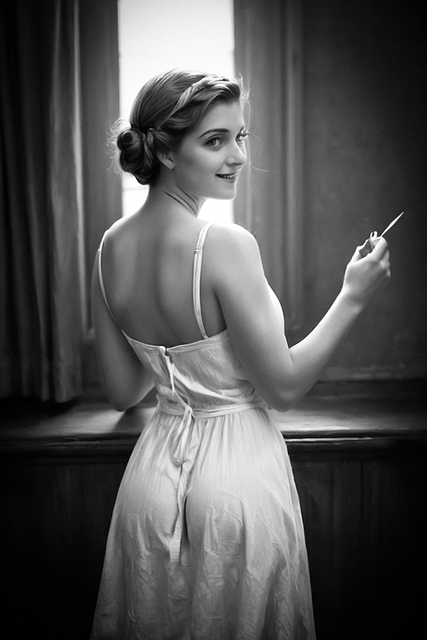
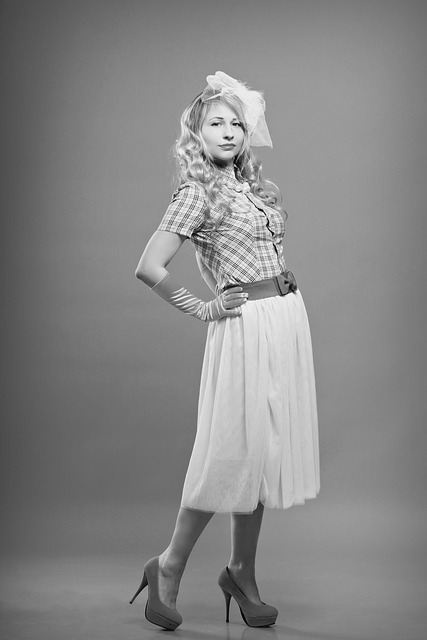
Women’s fashion saw a significant shift in the 1920s, reflecting a mood of liberation, modernity, and defiance of social mores. Ladies’ fashion during the Roaring 20s fashion looked like this:
- Flapper Dresses
The famous flapper dress came to represent fashion from the 1920s. The style of flapper dresses was straight and loose, frequently with a drop waist that fell below the hips. The increased mobility allowed by these gowns reflected the era’s women’s busy lifestyles and newly discovered independence.
- Knee-Length Skirts
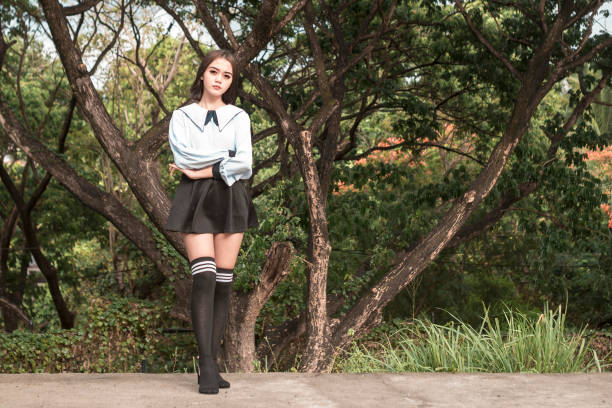
In the 1920s, skirt hemlines rose to either just above or below the knee, making them shorter. This break from the previous decades’ ankle-length skirts was a symbolic rejection of Victorian modesty as well as a practical decision for dancing and other activities.
- Sleeveless Tops and Blouses
The 1920s saw a lot of sleeveless or short-sleeved blouses and tops that exposed more armpit than was previously stylish. Usually having straight or slightly boxy designs that accentuated the silhouette of flapper dresses, these tops had a straightforward style.
- Fabrics and Embellishments
Chiffon, silk, and crepe were among the lightweight, flowing fabrics that were popular in 1920s fashion. Flapper outfits were elevated with the addition of glitz and sophistication through the use of metallic embroidery, sequins, and elaborate beadwork on dresses. Another common adornment that gave gowns movement and dimension was fringe.
- Accessories
Accessories were essential to finishing off the flapper style. Cloche hats, long pearl necklaces, beaded evening bags, and headbands with feathers were common accessories for glamming up ensembles. Shoes with short heels or strappy sandals with a T-strap were preferred because they offered comfort and style for dancing.
- Hairstyles and Makeup
The 1920s saw a lot of short, sleek hairstyles, with the bob haircut becoming especially popular. Popular hairstyling techniques that gave short hair structure and refinement were Marcel waves and finger waves. The classic flapper look was typified by bolder, more dramatic makeup, such as defined eyebrows, bright red lipstick, and dark, smoky eyes.
In general, women’s fashion of the 1920s adopted a more carefree and androgynous style, defying gender stereotypes and expressing the newly discovered liberties and ambitions of women in the Roaring 20s fashion.
